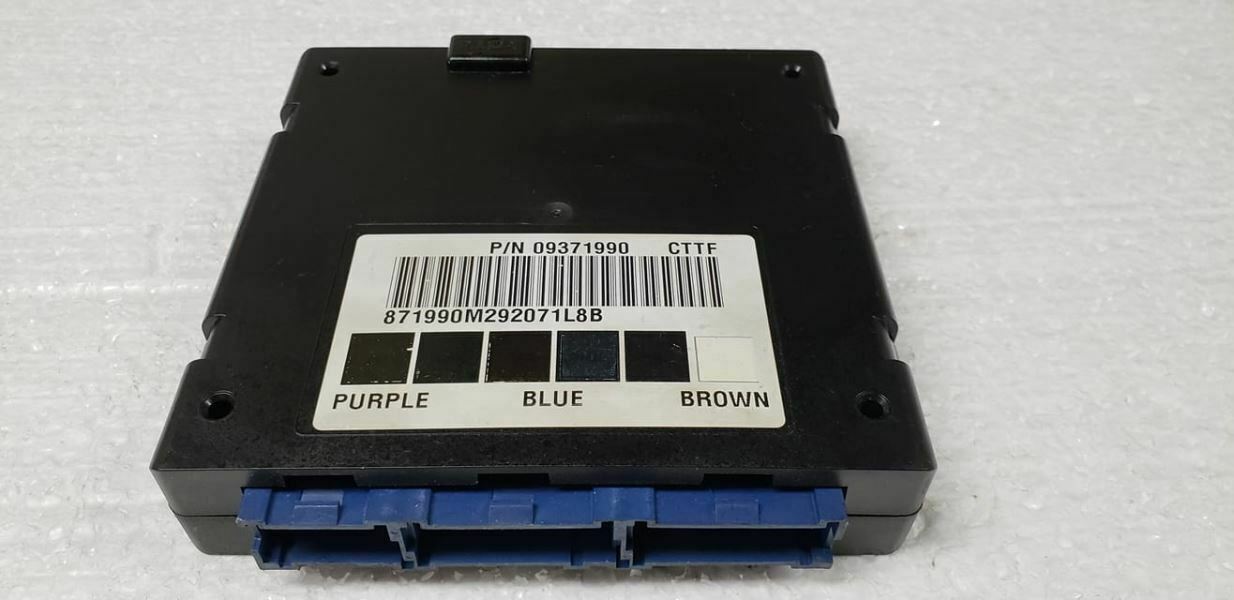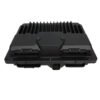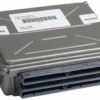If you’re dealing with baffling electrical issues in your GM truck or SUV—like flickering lights, power windows with a mind of their own, or a security system that won’t cooperate—you’ve likely met the culprit: a failing Body Control Module (BCM). As a technician with over two decades of experience, I’ve seen how a faulty BCM can turn a reliable workhorse into a source of daily frustration. This isn’t just an inconvenience; it can affect vehicle security and safety systems. That’s why we offer a straightforward, reliable solution.
This isn’t just a replacement part; it’s a complete fix. We take a genuine GM-spec Body Control Module and professionally program it to your vehicle’s exact Vehicle Identification Number (VIN) before it ships. This means it arrives loaded with the latest GM software updates, ready for installation. You get to skip the expensive trip to the dealership for programming, saving you both time and hundreds of dollars. This is the smart, efficient way to restore your vehicle’s complex body systems to perfect working order.
A Technician’s Notebook: The Case of the Haunted Sierra
A customer brought in his 2000 Sierra 1500 with a list of complaints that sounded like something from a ghost story. The dome light would stay on, the radio presets would randomly wipe, and occasionally, the horn would blare when he used the turn signal. He’d replaced the battery and checked grounds, but the gremlins persisted. A scan showed a handful of U-codes (communication errors) pointing to the BCM. After confirming power and ground to the module were solid, we knew the BCM’s internal logic was failing. Installing a pre-programmed module like this one solved every single issue in under an hour. It’s a classic failure mode for these trucks, and a direct-fit, programmed module is the cleanest fix.
Is Your Vehicle Showing These Symptoms?
A failing BCM can cause a wide range of confusing electrical problems. Here are some of the most common signs I’ve diagnosed in the shop:
- ✔ Erratic or non-functional power windows, door locks, and mirrors.
- ✔ Interior or exterior lights that flicker, stay on, or don’t work at all.
- ✔ The security system acting up, causing no-start conditions or false alarms (often with a ‘Security’ light on the dash).
- ✔ Inconsistent or non-working dashboard gauges.
- ✔ Communication error codes (U-codes) when scanned with a diagnostic tool.
- ✔ The horn, radio, or climate controls behaving unpredictably.
Your Straightforward BCM Installation Guide
Installing your new 2000 Sierra 1500 BCM is a manageable job for a confident DIYer. Here’s a general guide to get you started:
- Safety First: Always disconnect the negative terminal from your vehicle’s battery and wait at least 10 minutes to allow capacitors to discharge.
- Locate the BCM: On most of these GM trucks and SUVs, the BCM is located under the driver’s side of the dashboard, to the left of the steering column. You may need to remove a lower dash panel for access.
- Disconnect and Remove: Carefully unplug the electrical connectors from the old BCM. They have locking tabs that need to be depressed. Once disconnected, unbolt or unclip the module from its mounting bracket.
- Install the New Module: Mount your new, pre-programmed BCM in the same location and securely reconnect all the electrical harnesses. Ensure they click into place.
- Reconnect and Test: Reconnect the negative battery terminal. Turn the key to the ‘On’ position (without starting the engine) and test your lights, locks, windows, and other accessories to confirm proper function.
Important Post-Installation Note: In some cases, additional steps may be required. If your airbag light is on, a professional scan tool is needed to perform the ‘Setup SDM Primary Key in BCM’ procedure. A ‘Brake Pedal Position Relearn’ may also be necessary on certain models. Always refer to a service manual for model-specific instructions.
Verified Compatibility for Your GM Vehicle
This module is a direct replacement for service numbers 19208539, 9371990, and 9385236. It is guaranteed to fit the following vehicles with the specified options:
- ✔ 2000 Chevrolet Silverado 1500 / 2500 Pickup
- ✔ 2000 GMC Sierra 1500 / 2500 Pickup
- ✔ 2000 Chevrolet Tahoe / Suburban 1500 & 2500
- ✔ 2000 GMC Yukon / Yukon XL 1500 & 2500 (exc. Denali)
- ✔ 2001 Chevrolet S10 / Blazer S10
- ✔ 2001 GMC S15 Sonoma / Jimmy S15
- ✔ 2001 Oldsmobile Bravada
- ✔ 2001 Chevrolet Astro / GMC Safari
Frequently Asked Questions
Frequently Asked Questions
Do I really need to provide my VIN?
Yes, absolutely. We program the BCM with the latest GM software specific to your vehicle’s factory options. This ensures full compatibility and prevents issues that can arise from using a generic, non-programmed module.
Is this a plug-and-play part?
For most functions, yes. Because we program it beforehand, it will control the basic body functions immediately. However, as noted, certain systems like the airbag (SRS) or brake position sensor may require a ‘relearn’ or ‘sync’ procedure with a professional scan tool after installation.
Do I need to return my old BCM?
No. There is no core charge for this part. You can keep your original module.
What tools are required for installation?
Basic hand tools are typically all that’s needed for the physical installation, such as a socket set and a panel removal tool. A professional-grade bidirectional scan tool is only required if post-install procedures like an airbag sync are necessary.
Will this fix my ‘Service 4WD’ light?
A faulty BCM can sometimes cause false warning lights by failing to communicate properly with other modules, like the Transfer Case Control Module (TCCM). While this can resolve such issues, it’s crucial to have the vehicle properly diagnosed to confirm the BCM is the root cause.



